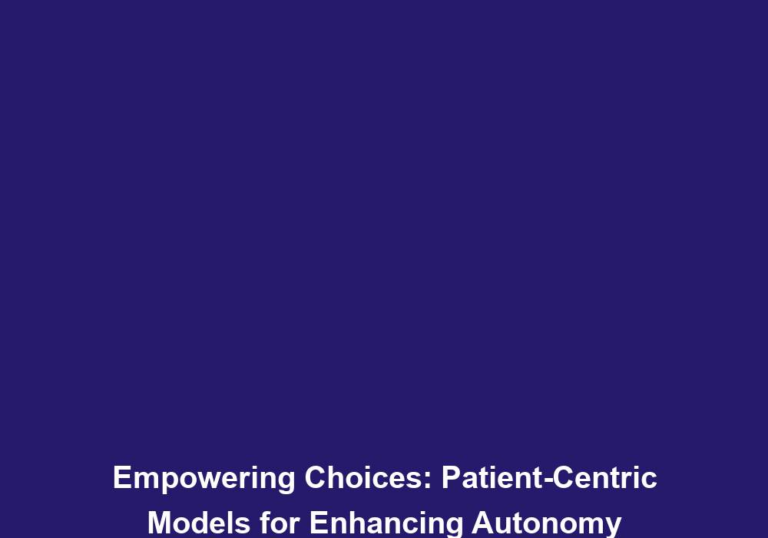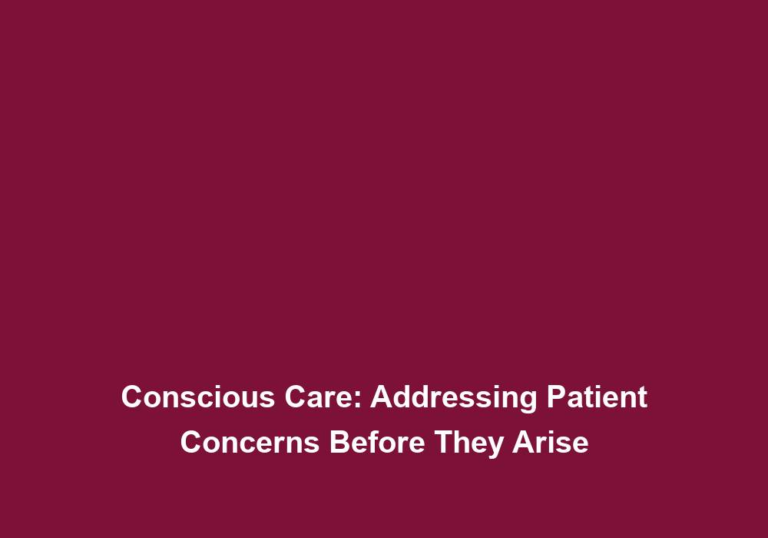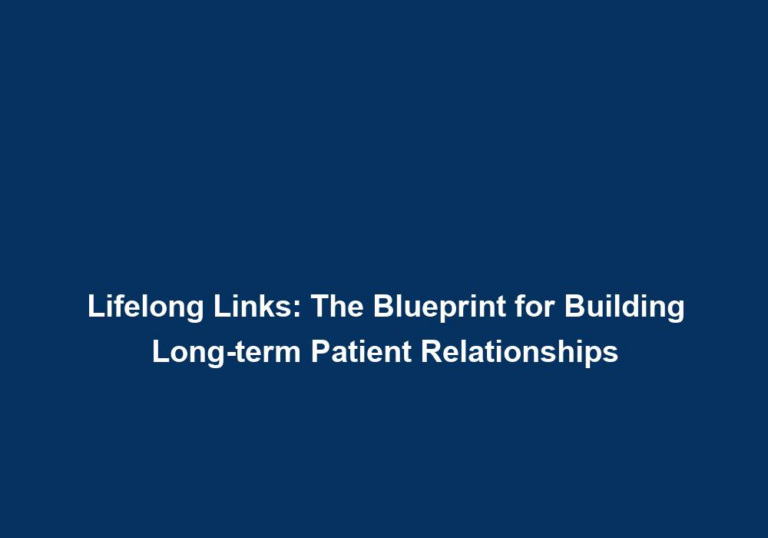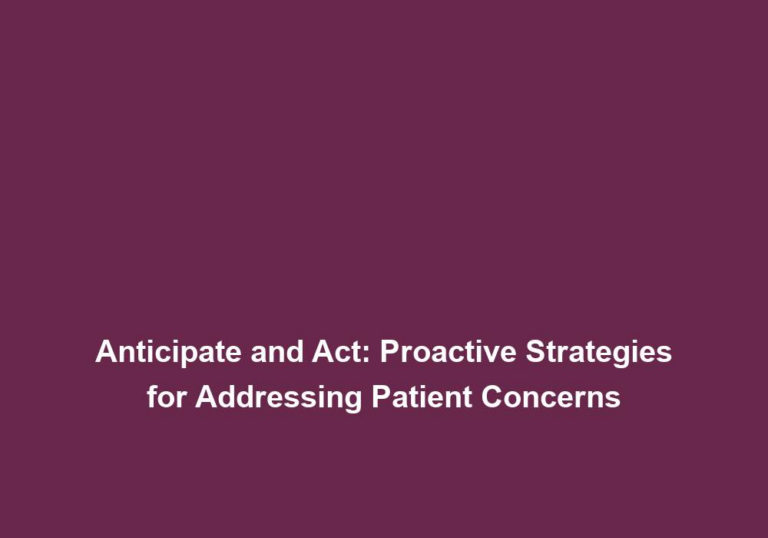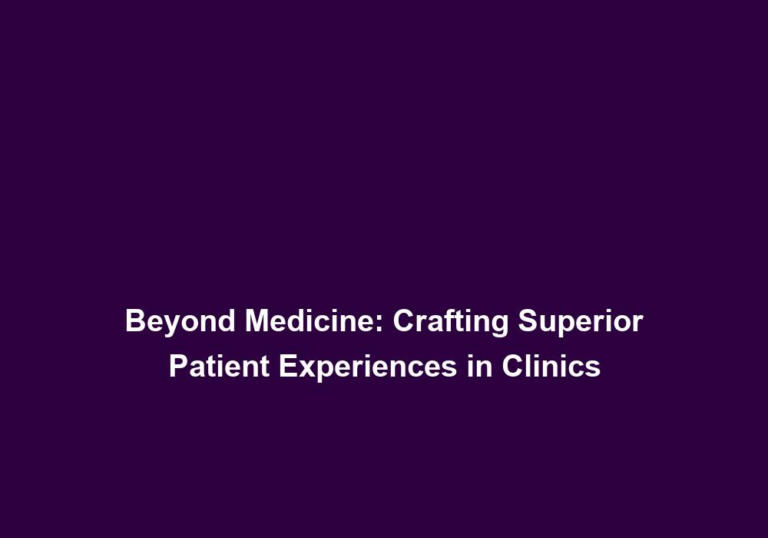Elevate and Engage: Enhancing Patient Experience through Service Quality Improvement
In today’s competitive healthcare landscape, providing exceptional patient experience has become crucial for hospitals and healthcare organizations. A positive patient experience not only improves patient satisfaction but also plays a significant role in attracting new patients and retaining existing ones. One effective way to enhance patient experience is through service quality improvement. By elevating and engaging patients, healthcare providers can create a truly patient-centric approach that focuses on meeting their needs and expectations. In this article, we will explore various strategies and best practices to enhance patient experience through service quality improvement.
Understanding the Importance of Patient Experience
Patient experience is a critical aspect of healthcare delivery, with wide-ranging implications for both patients and healthcare providers. A positive patient experience has been linked to improved clinical outcomes, increased patient adherence to treatment plans, and better patient-provider relationships. When patients have a positive experience, they are more likely to trust their healthcare providers, follow their recommendations, and actively participate in their own care. Additionally, patients who have a positive experience are more likely to recommend the healthcare organization to others, leading to increased referrals and growth. Therefore, investing in improving patient experience can have long-term benefits for healthcare providers.
Key Strategies for Enhancing Patient Experience
1. Establish a Patient-Centric Culture
Creating a patient-centric culture is fundamental to enhancing patient experience. This involves fostering a culture that prioritizes patient needs and values effective communication and empathy. Healthcare providers should train their staff to actively listen to patients, respond to their concerns promptly, and demonstrate empathy and compassion. By making patients feel heard and valued, healthcare providers can build trust and improve patient satisfaction. Additionally, a patient-centric culture encourages collaboration and shared decision-making, empowering patients to actively participate in their healthcare journey.
- Train staff to actively listen to patients and respond to their concerns promptly.
- Foster empathy and compassion in healthcare providers.
- Encourage collaboration and shared decision-making between patients and healthcare providers.
2. Improve Communication Channels
Effective communication is vital for providing a positive patient experience. Healthcare organizations should offer multiple channels for patients to communicate with their healthcare providers, such as phone, email, and online portals. Additionally, implementing patient-centered communication tools, like secure messaging platforms or telehealth services, can enhance convenience and accessibility for patients. Clear and timely communication ensures that patients have the necessary information to make informed decisions about their care and reduces the likelihood of misunderstandings or frustrations.
- Offer multiple communication channels for patients to reach out to their healthcare providers.
- Implement patient-centered communication tools, such as secure messaging platforms or telehealth services.
- Ensure clear and timely communication to provide patients with the necessary information for informed decision-making.
3. Streamline Appointment Processes
Long waiting times and inefficient appointment processes can lead to patient dissatisfaction. Healthcare providers should aim to streamline their appointment processes by implementing online scheduling systems, reducing wait times, and improving overall clinic efficiency. Clear communication about appointment delays or rescheduling is also crucial to managing patient expectations and preventing frustration. By optimizing appointment processes, healthcare providers can minimize patient waiting times and create a more efficient and positive experience.
- Implement online scheduling systems to improve appointment booking convenience.
- Reduce wait times through improved clinic efficiency.
- Communicate effectively about appointment delays or rescheduling to manage patient expectations.
4. Enhance Staff Training and Development
Investing in staff training and development is key to ensuring consistent service quality improvement. Healthcare providers should provide ongoing education and training programs to enhance the skills and knowledge of their staff. This includes training on effective communication, customer service, and empathy, enabling staff to provide exceptional care to patients consistently. Well-trained staff members are better equipped to address patient needs, provide accurate information, and create a supportive and caring environment.
- Provide ongoing education and training programs for staff members.
- Focus on effective communication, customer service, and empathy training.
- Equip staff with the necessary skills to consistently provide exceptional care.
5. Foster a Collaborative Care Approach
Collaborative care involves involving patients in their treatment plans and decisions. By engaging patients and their families in the care process, healthcare providers can empower them to actively participate in their healthcare journey. This can be achieved through shared decision-making, clear patient education materials, and involving patients in care transitions and discharge planning. By actively involving patients in their own care, healthcare providers can improve treatment adherence, patient satisfaction, and overall health outcomes.
- Practice shared decision-making with patients to involve them in treatment plans.
- Develop clear patient education materials to facilitate better understanding.
- Involve patients in care transitions and discharge planning to ensure continuity of care.
6. Personalize the Patient Experience
Every patient is unique, and personalizing their experience can significantly impact their satisfaction levels. Healthcare providers should strive to understand each patient’s individual needs, preferences, and values, tailoring their care accordingly. Personalization can be achieved through personalized communication, customized care plans, and addressing patients by their preferred name or pronouns. By recognizing and respecting the individuality of each patient, healthcare providers can create a more meaningful and satisfying patient experience.
- Gather information about each patient’s individual needs, preferences, and values.
- Tailor care plans and communication to meet the specific requirements of each patient.
- Address patients by their preferred name or pronouns to create a welcoming and inclusive environment.
7. Continuously Collect and Act on Patient Feedback
Collecting and acting upon patient feedback is crucial for identifying areas of improvement and addressing patient concerns. Healthcare providers should implement robust feedback mechanisms, such as surveys, suggestion boxes, or online platforms, to gather patient feedback regularly. Analyzing this feedback and taking concrete steps to address the issues raised demonstrates a commitment to service quality improvement and patient satisfaction. By actively seeking and acting upon patient feedback, healthcare providers can make informed decisions to enhance the patient experience.
- Implement robust feedback mechanisms to gather patient feedback regularly.
- Analyze patient feedback to identify areas for improvement.
- Take concrete steps to address the issues raised and improve service quality.
8. Embrace Technology Solutions
Leveraging technology can significantly enhance patient experience. Healthcare providers should invest in modern solutions, such as electronic health records (EHR), patient portals, and telehealth services, to improve accessibility, convenience, and care coordination. Implementing technological solutions can streamline administrative tasks, reduce errors, and provide patients with easy access to their medical information. By embracing technology, healthcare providers can enhance efficiency, communication, and overall patient satisfaction.
- Implement electronic health records (EHR) and patient portals for easy access to medical information.
- Offer telehealth services to improve accessibility and convenience for patients.
- Leverage technology to streamline administrative tasks and reduce errors.
Conclusion
Enhancing patient experience through service quality improvement is crucial for healthcare providers aiming to deliver exceptional care and stay competitive in the industry. By establishing a patient-centric culture, improving communication channels, streamlining appointment processes, investing in staff training, fostering collaborative care, personalizing the patient experience, collecting and acting on patient feedback, and embracing technology solutions, healthcare organizations can elevate and engage their patients effectively. Prioritizing patient experience not only leads to higher patient satisfaction but also helps in building a loyal patient base and achieving better healthcare outcomes.


